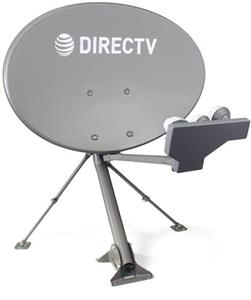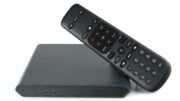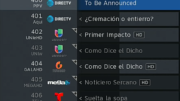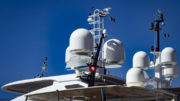The world of satellite television is full of confusing terminology. Good thing, I suppose, because explaining it all keeps me employed! Today we’re going to talk about what’s referred to as “L-Band” satellite, why it’s called that even though it isn’t, and what the term “really” means. Are you ready?
It all started with a war.
Way back in the 1940s as broadcasting began to blossom, warring powers needed to talk it in ways the enemy couldn’t understand. So, they started using a series of letters to describe different radio ranges. Because it was wartime, they didn’t just start with A and go to Z, getting higher as they went. They deliberately scrambled the letters to make it harder to know what was being done.
As broadcasting moved back to a civilian footing, a lot of this terminology stayed around. Eventually, a group called the IEEE, the Institute of Electrical and Electronics Engineers, made minor changes and created the permanent system of referring to signal frequencies that’s used today. Even now, the IEEE is one of a handful of international agencies that set standards for things like this. It’s kind of their jam.
The bands we care about
You’re familiar with the VHF band, where TV started, and the UHF band, which houses most TV now as well as most cell phone broadcasting. You may have heard of the C band, which was once used for satellite and is now used for 5G. As a satellite fan, you may have heard of the Ka and Ku bands. These are sub-bands that exist just above (Ka) and just under (Ku) the K band. It turns out that the K band itself of 18-28GHz isn’t much good for broadcasting.
And then there’s the L band. The IEEE designation of the L band is from 1GHz to 2GHz. That’s important, and it’s going to come up in a little while.
Enter the “retronym.”
Do you know what a retronym is? It’s like when something new is invented and you have to use a new word for the old thing so you don’t confuse it with the new thing. “Landline phone,” “Analog watch,” and “Snail mail” are retronyms. Before cell phones, digital watches, and e-mail, we just said “phone,” “watch,” and “mail.”
L-Band is a retronym in that sense. In satellite terms, it describes satellite broadcasts from 950-2150MHz. That’s not an exact match for the L-Band, but it’s pretty close. But what we’re really talking abut is more-or-less traditional satellite. In other words, not DIRECTV SWM or DISH Hybrid, but the kind of satellite signals we used to all used before SWM and Hybrid equipment came out. After those new technologies came out, we needed a retronym to refer to the old technologies. And so, it started being called “L-Band.”
It’s not a great term, but it’s what we got.
The real defining characteristic of L-Band satellite isn’t really the frequency range. In fact, DIRECTV SWM uses the 1700-1900MHz range so technically it’s in the L band as well. What distinguishes it is that it conforms to the basic standards that satellite TV uses all over the world: one cable per polarity, and if there is a secondary tone, a second set of cables for those two polarities. Don’t get too worked up if that definition doesn’t mean much to you. That’s a subject for another article.
If we have other tech, why still talk about L-Band?
L-Band satellite signals are still used for large installs. Multiple cables run to the multiswitches which then consolidate them on a single wire. They’re also used for older tech like RV and marine satellite dishes. We’ll never be rid of L-Band satellite, because its simplicity makes it easy to use and scale up. That’s never going to go out of fashion.
Get L-Band satellite equipment from Solid Signal
Solid Signal is the place you can find equipment for L-Band satellite signals and so much more! Shop the great selection at our web site and you’ll find what you need! Need help? That’s why people choose Solid Signal. We answer the phone, really! Try us at 888-233-7563 during East Coast business hours. If it’s after hours, fill out the form below. We’ll get back to you, usually within one business day.




